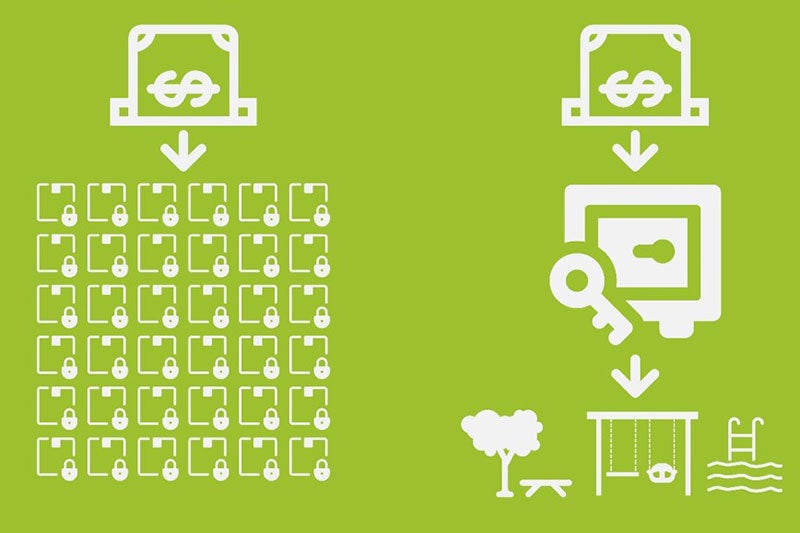Why?
Why?
While the City’s current park system has resulted in many beautiful and enjoyable parks for some, it has also resulted in corresponding disinvestments for many; overall resulting in an inequitable park system. The lack of funding tools and land constraints have widened park shortfalls in these typically older, more densely populated neighborhoods, particularly adversely affecting traditionally undeserved communities.
The Parks Master Plan is needed to address these inequities so that everyone has equal access to safe, clean and thriving park spaces. The initiative will create a new system for all that prioritizes the greatest needs and allows us to plan holistically for the future.
For all current Park Master Plan documents please visit the Planning Department Parks Master Plan website.
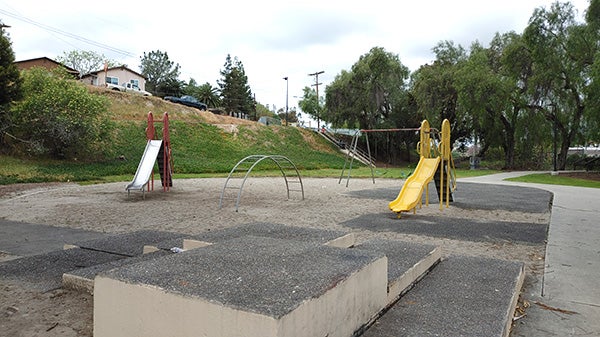
Encanto
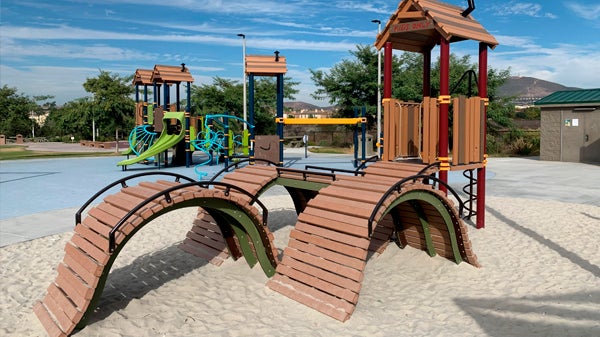
Torrey Highlands
The 2008 General Plan identified the need for a new Parks Master Plan. The Parks Master Plan aligns parks planning with the City of San Diego’s vision to achieve the shared Citywide goals of sustainability and resilience, equity, livability, and connectivity. The development of the Parks Master Plan will help implement the Climate Action Plan by providing a framework for thriving public spaces to be enjoyed by residents and visitors throughout the City.
Parks Master Plan Vision
Parks Master Plan Vision
- Prioritizes equitable investments in parks in areas with the greatest needs
- Forms an interconnected Citywide park system
- Provides thriving recreational spaces accessed by walking, biking, or transit
- Facilitates innovative recreational opportunities
- Expands Citywide park system by acquiring new parkland in areas where needed most
- Creates opportunities for everyone to safely and enjoyably play outside
- Designs a healthy sustainable park system that preserves critical habitat and open space and protects bio-diversity
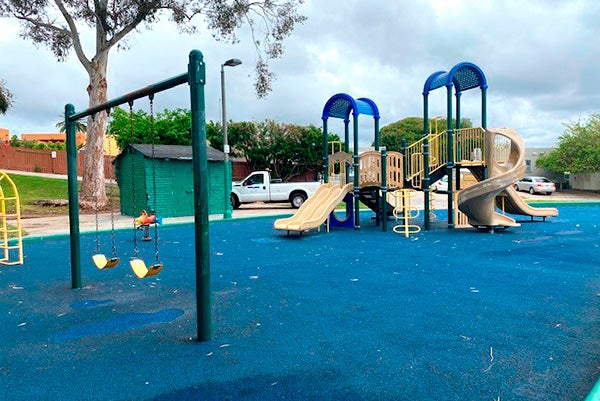
Southeastern
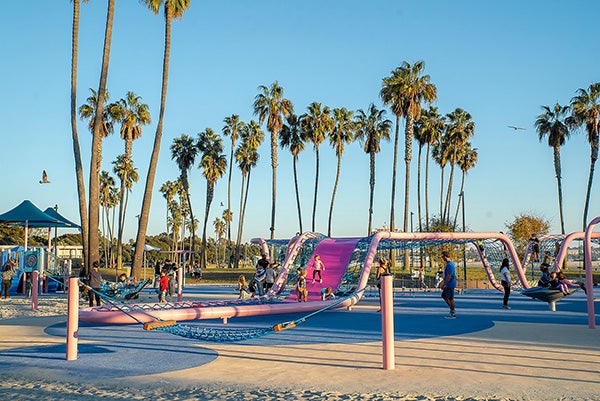
Mission Bay
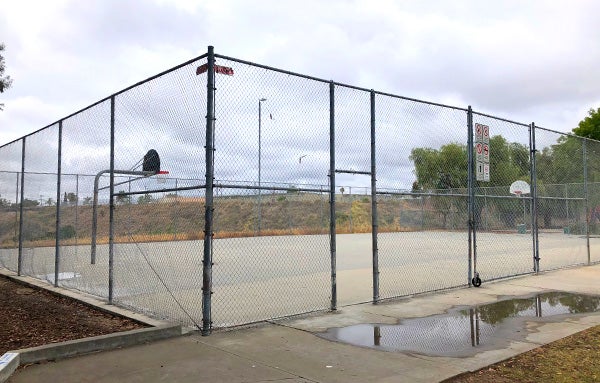
Skyline-Paradise Hills
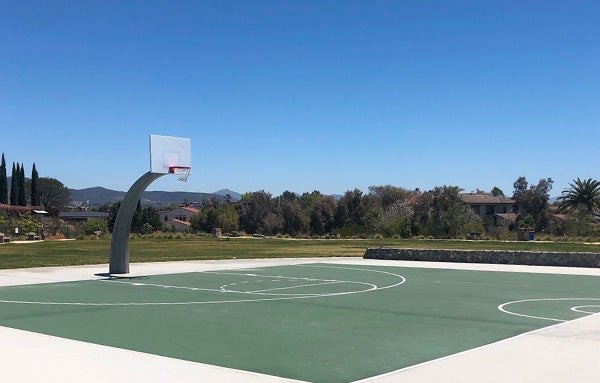
Pacific Highlands Ranch
Public Outreach
Public Outreach
-
Citywide statistically valid survey
-
15 workshops and community events
-
Online Public Engagement Forum
-
Online surveys
-
Public input received at Parks and Recreation Board, Balboa Park Committee, Mission Bay Park Committee, Mobility Board, Community Planners Committee (CPC), Planning Commission, Public Safety and Livable Neighborhoods (PS&LN) Council Committee and City Council
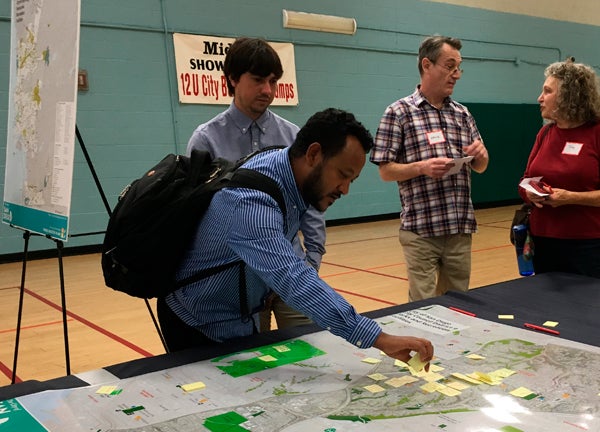
What We Learned
Satisfaction with Facilities and Programs
Satisfaction with Facilities and Programs
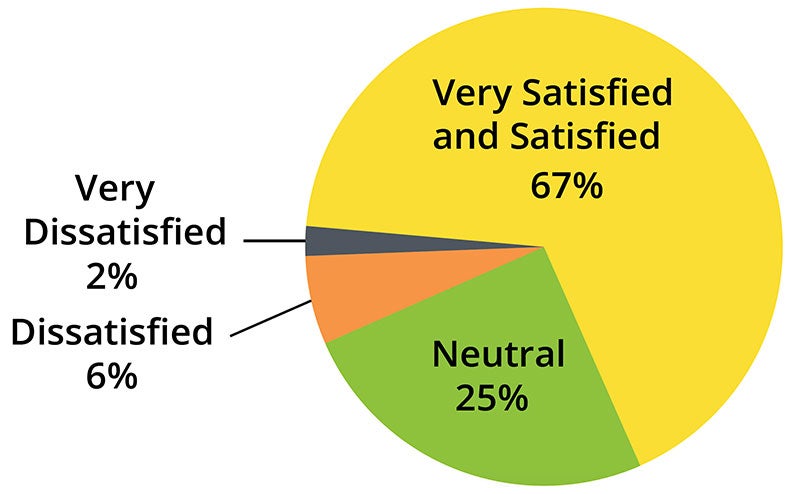 67% Very Satisfied and Satisfied, 25% Neutral, 6% Dissatisfied, 2% Very Dissatisfied
67% Very Satisfied and Satisfied, 25% Neutral, 6% Dissatisfied, 2% Very Dissatisfied
Just over two-thirds (67%) of residents were satisfied or very satisfied with the City's Parks and Recreation Facilities/Programs
Upgrades to Parks and Park Facilities
Upgrades to Parks and Park Facilities
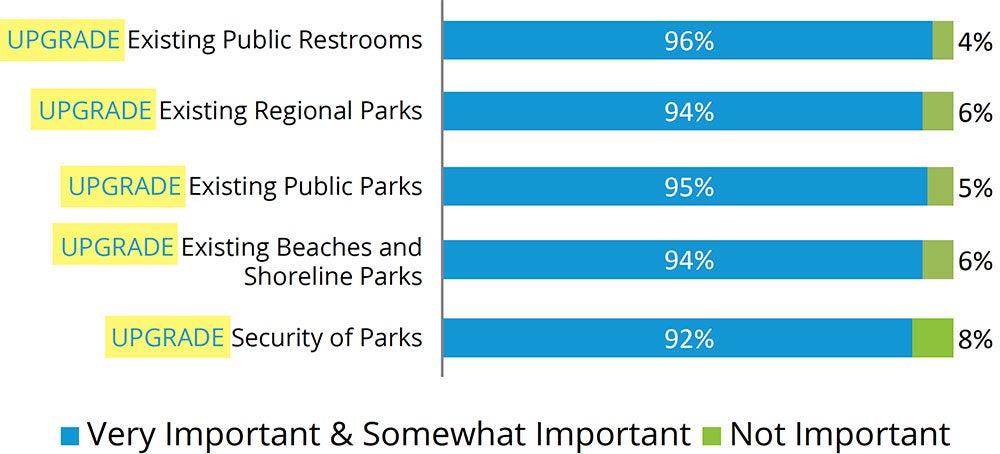 96% of residents think upgrades to existing public restrooms are important, 94% of residents think upgrades to existing regional parks are important, 95% of residents think upgrades to existing public parks are important, 94% of residents think upgrades to existing beaches and shoreline parks are important, 92% of residents think upgrades to security of parks are important
96% of residents think upgrades to existing public restrooms are important, 94% of residents think upgrades to existing regional parks are important, 95% of residents think upgrades to existing public parks are important, 94% of residents think upgrades to existing beaches and shoreline parks are important, 92% of residents think upgrades to security of parks are important
How We Currently Plan
The City currently uses the General Plan acreage-based standard of 2.8 acres per 1,000 population to plan for future parks on a community plan area basis. As the City has developed, this current standard creates significant challenges:
- Results in inequities, particularly in communities of concern
- Limits comprehensive planning for an interconnected Citywide parks system
- Does not recognize that urbanized areas lack available land
- Areas with the greatest needs lose opportunities for investments if additional land is not available
- Limits communities’ ability to propose innovative projects within parks that we are unable to physically expand
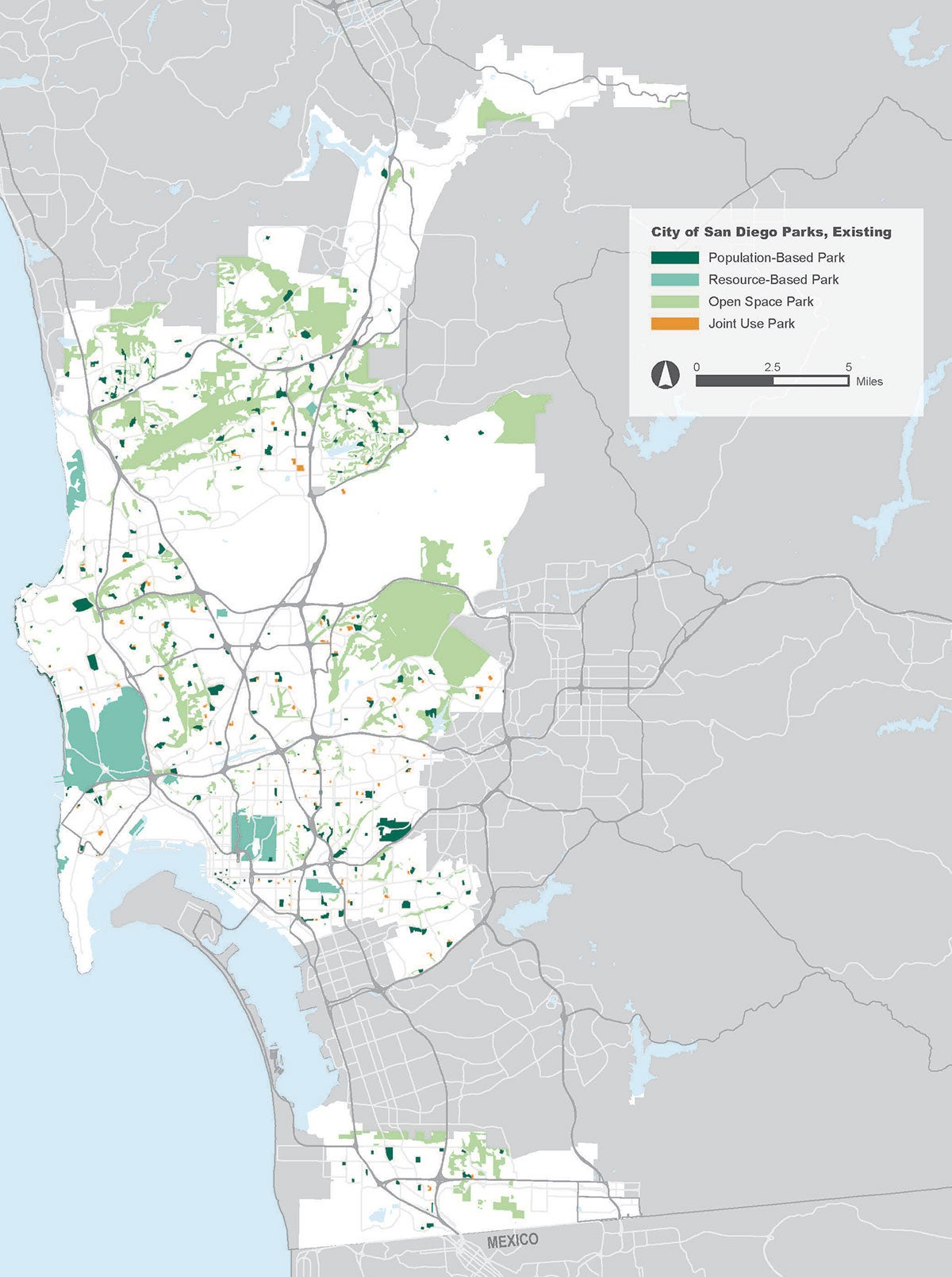
City of San Diego Existing Parks
Parks Master Plan Recommendations
Parks Master Plan Equity Goals
Parks Master Plan Equity Goals
Addressing long-standing inequities experienced by people in traditionally underserved communities and other marginalized populations allowing everyone to fairly share the same benefits from parks and attain full and equal access to recreational opportunities regardless of one’s background, identity, ability, and location.
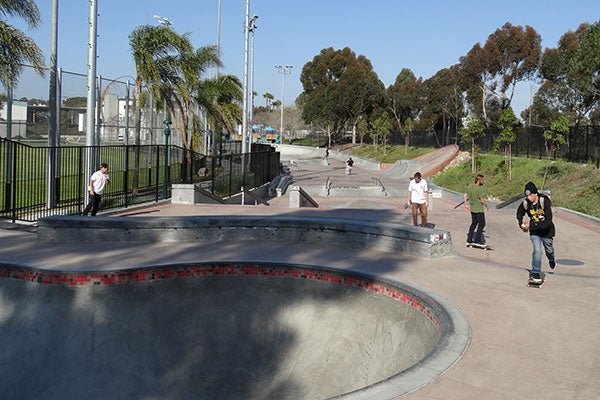
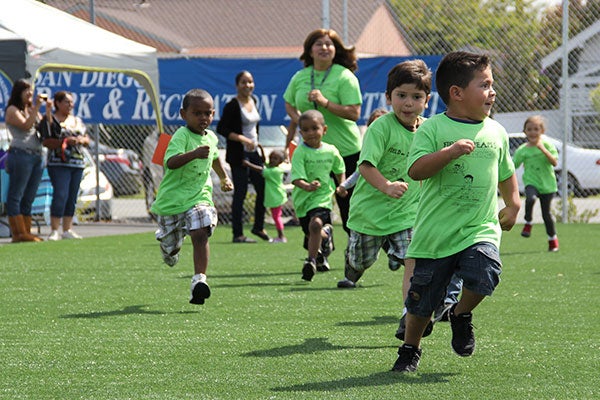
To address current park inequities, at a minimum 80% of Citywide Park Development Impact Fees will be prioritized to park deficient communities, with at least 50% of that amount to be prioritized solely within traditionally underserved communities for at least 5 years.
Parks Master Plan Park
10-20-30-40 Minute
Access Goal
Parks Master Plan Park
10-20-30-40 Minute
Access Goal
Sets a travel time goal for reaching a meaningful recreational opportunity for at least 40 minutes and proposed equity across communities to ensure all San Diegans set a travel goal to achieve:
- 10-minute walk and roll
- 20-minute bike ride or micro-mobility ride
- 30-minute transit access to increase ways for everyone to gain a more diverse range of recreational experiences throughout the City
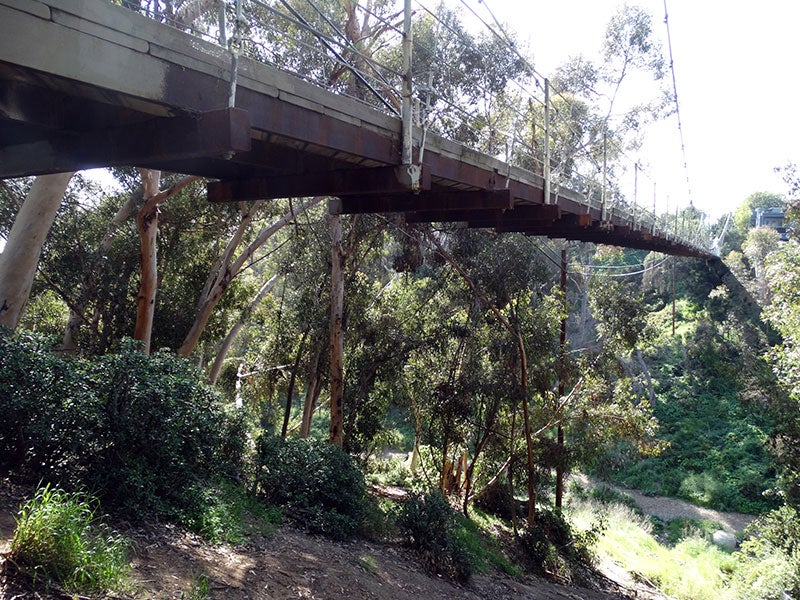
Bankers Hills Open Space and Spruce Street Suspension Bridge
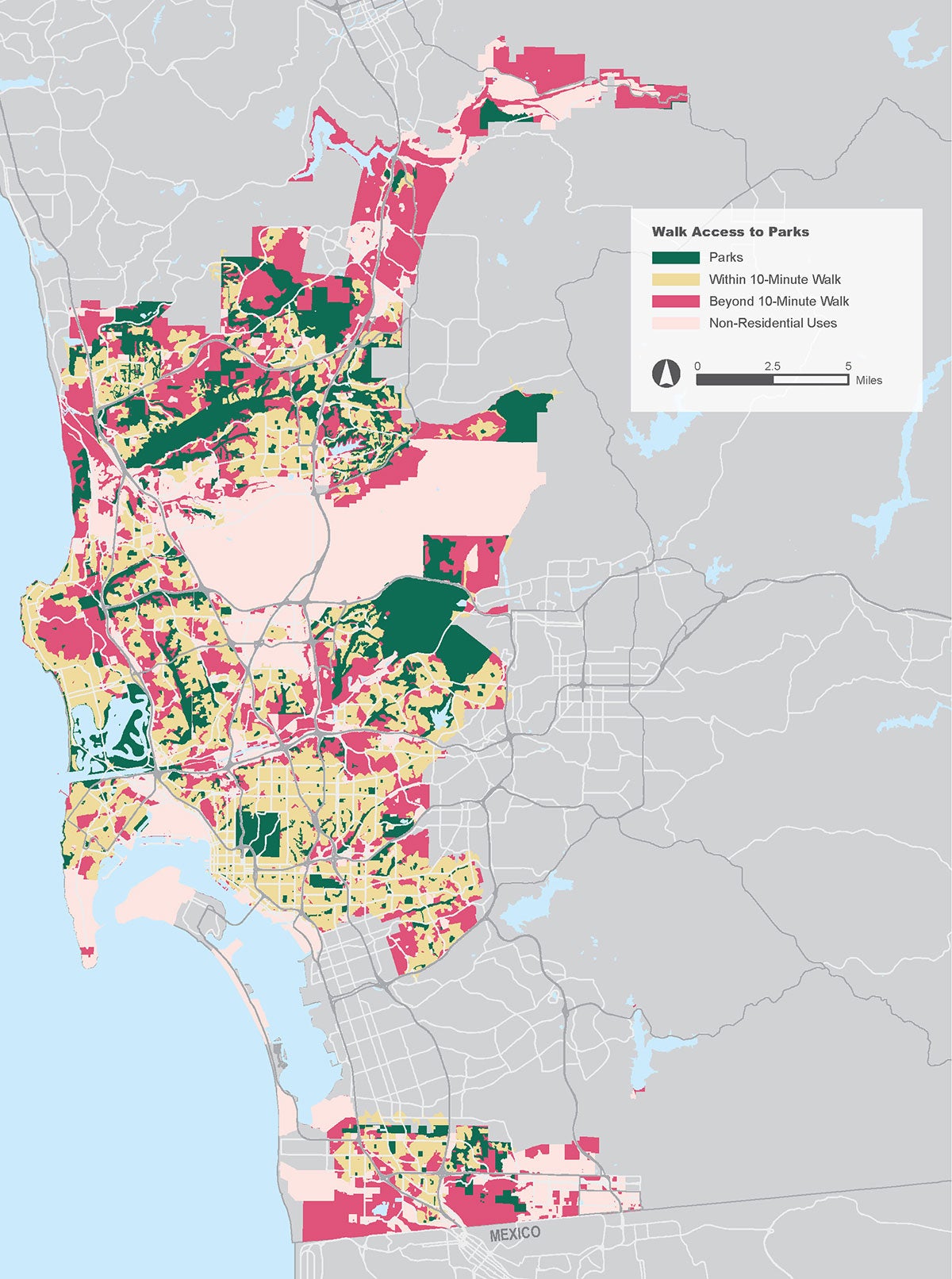
Walk Access to City of San Diego Existing Parks
New Recreational Value-Based Park Standard
How is a park's value measured?
How is a park's value measured?
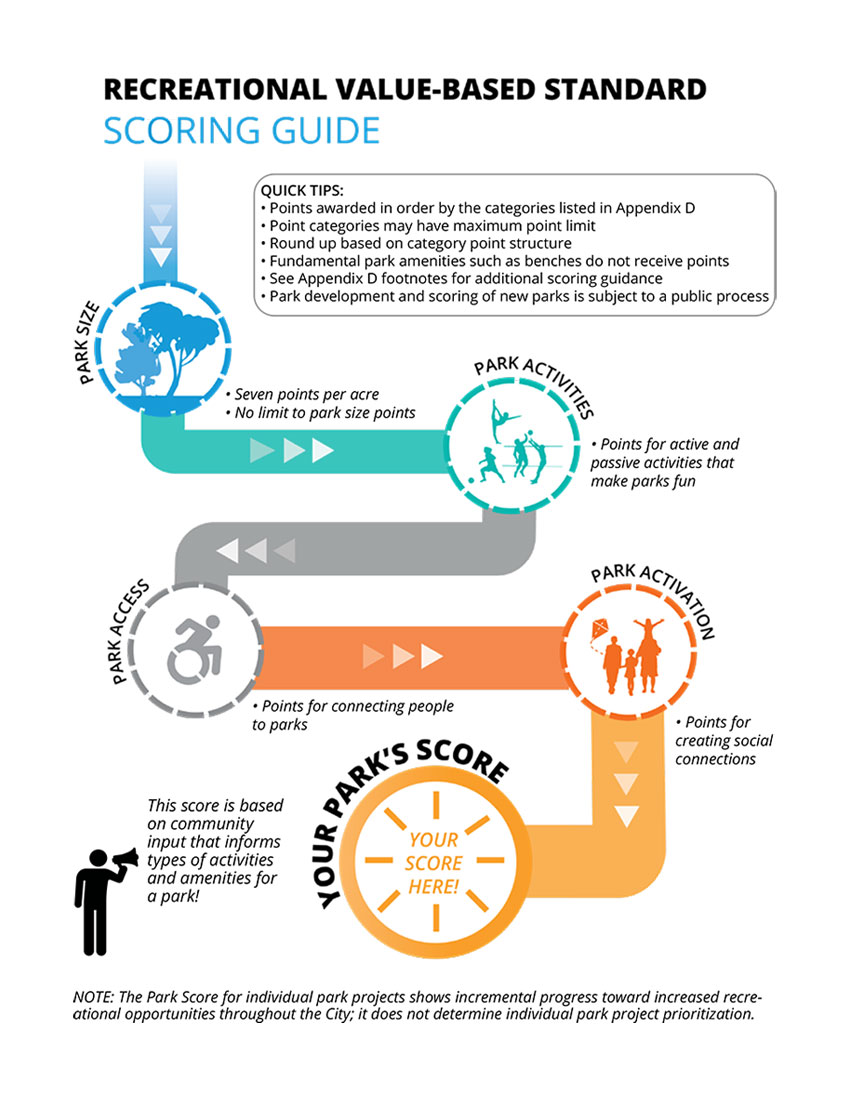
Why do we need to update our park development fees?
Why do we need to update our park development fees?
The City currently sets and collects fees on a community planning area level. This presents significant challenges including:
- Parks are to be enjoyed by all residents, but the fees currently collected must be spent within the community it was collected in. This has resulted in an inequitable parks system
- Restricts City's ability to deliver parks sooner even when money is otherwise available
- Funds not always spent on parks
- Fees greatly vary between communities further contributing to inequities
Citywide Park Development Impact Fee
Citywide Park Development Impact Fee sets a standard impact fee across the entire city allowing the City to:
- Deliver parks faster with access to a larger pool of funds
- Begin to address inequities by prioritizing park investments where they are most needed
- Efficient use of land to provide more recreational assets at lower cost
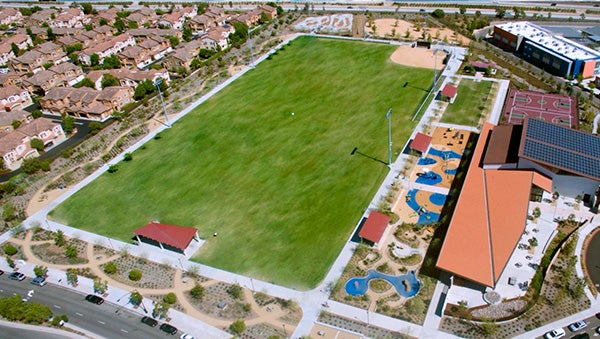
Pacific Highlands Ranch Community Park
This is all so the City can move away from One City, Two Realities to One City and
One Amazing Park System for All of Us.
